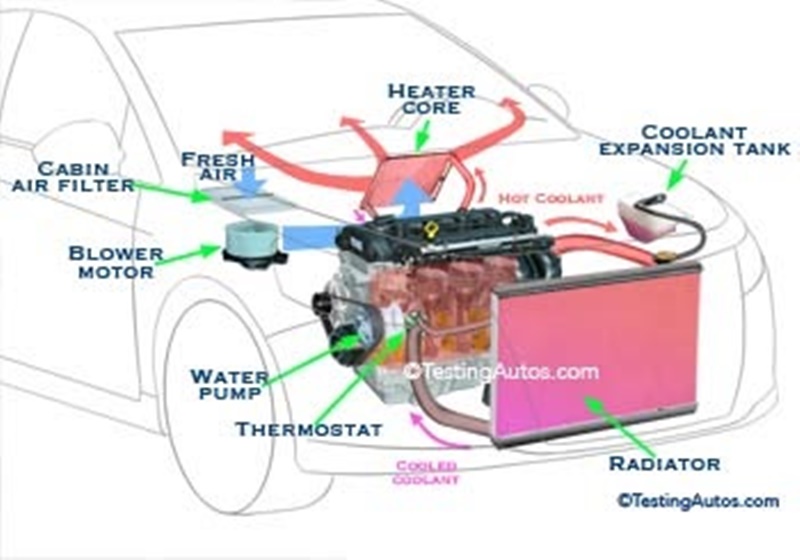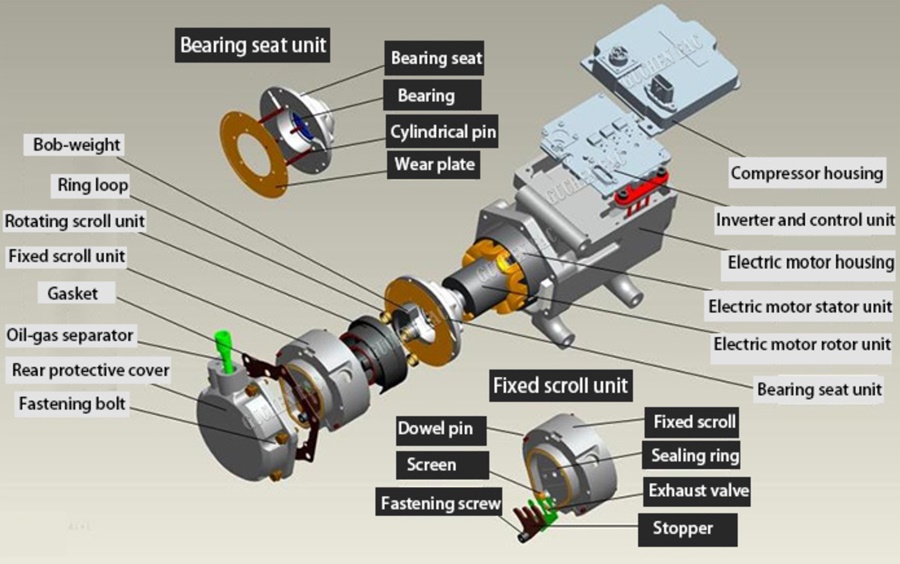When we think of the performance and comfort of a vehicle, the engine, suspension, and wheels usually come to mind. However, one of the most critical systems often overlooked is the HVAC system. The HVAC system (heating, ventilation, and air conditioning) in a vehicle plays a crucial role in providing comfort, safety, and even the overall performance of the vehicle. In this article, we will explore what the HVAC system does for your vehicle, how it works, and why it is so essential.

Understanding the HVAC System in Your Vehicle
The HVAC system in your vehicle is responsible for controlling the internal environment of the car. Its main purpose is to regulate the temperature and air quality within the cabin, ensuring both comfort and safety. The HVAC system is a combination of various components, each contributing to the efficient functioning of the system.
The primary functions of the vehicle HVAC system include:
Heating: Maintaining a comfortable cabin temperature during cold weather.
Ventilation: Ensuring fresh air circulates and removes stale air from inside the vehicle.
Air Conditioning: Cooling the cabin during hot weather, making it more bearable.
The HVAC system helps in maintaining optimal cabin temperature, air quality, and driver focus—key elements that contribute to your overall driving experience.
How Does Your Vehicle’s HVAC System Work?
The HVAC system in vehicles relies on various components to ensure proper airflow and climate control. Understanding how these parts work together can give you a better idea of the role the HVAC system plays in your vehicle’s performance.
1. Heater Core
The heater core works similarly to a small radiator. It takes in hot coolant from the engine and uses this heat to warm the air that passes through it. The blower motor pushes this warm air into the cabin, ensuring the vehicle remains comfortable during colder months.
2. Air Conditioning Compressor
The air conditioning compressor is a vital component for the cooling process in the HVAC system. It compresses the refrigerant gas, which gets very cold when expanded. This pressurized refrigerant is then sent through the system to cool the cabin air.
3. Evaporator
The evaporator is located inside the vehicle and is responsible for cooling the air. When the refrigerant passes through the evaporator, it absorbs heat from the air, lowering the cabin temperature. The refrigerant then turns into a gas and is pumped back to the compressor to continue the cooling cycle.
4. Blower Motor
The blower motor is responsible for circulating air within the vehicle. Whether it is pushing warm air from the heater core or cool air from the air conditioning system, the blower motor ensures consistent airflow and temperature control inside the cabin.
5. Ducts and Vents
The ductwork in the HVAC system carries the air from the heater or air conditioner to various points inside the vehicle. The vents allow you to direct the airflow to specific parts of the vehicle, such as the windshield, footwell, or face.
6. Climate Control Panel
The climate control panel allows the driver and passengers to adjust the cabin temperature, fan speed, and airflow direction. Modern vehicles often come equipped with automatic climate control systems, where the vehicle adjusts the temperature automatically based on user preferences.
Benefits of a Properly Functioning HVAC System
An efficient HVAC system in your vehicle offers several benefits, which significantly impact comfort, safety, and overall driving experience. Here are the main advantages:
1. Optimal Cabin Temperature
One of the most apparent benefits of an HVAC system is the ability to maintain a comfortable cabin temperature, no matter the outside weather conditions. Whether you are driving through the heat of summer or the chill of winter, the HVAC system ensures that the interior of your car remains comfortable and pleasant.
2. Air Quality Control
The HVAC system also plays a vital role in maintaining air quality inside the vehicle. The system helps filter out pollutants, dust, and other airborne particles, providing fresh and clean air for the driver and passengers. Many vehicles also have cabin air filters that further enhance air quality, ensuring you breathe easily, even in heavily polluted areas.
3. Defrosting and Defogging
One of the less obvious but crucial functions of the HVAC system is its ability to defrost and defog the windows. When you’re driving in rainy or cold weather, the windows can easily fog up, reducing visibility and creating unsafe driving conditions. The HVAC system helps maintain clear windows by adjusting the temperature and directing airflow appropriately to the windows.
4. Improved Driver Comfort and Focus
Driving in uncomfortable conditions can lead to distractions, fatigue, and even accidents. An effective HVAC system helps you stay comfortable, ensuring that the driver remains alert and focused. The cool air in hot weather or the warmth in winter makes for a better driving experience, which can directly impact safety on the road.
5. Protection of Vehicle Components
Another indirect benefit of a well-functioning HVAC system is the protection of certain components of the vehicle. The climate control in your car can help maintain ideal temperatures within the engine and electronic systems, preventing overheating or malfunctions that could arise due to extreme weather conditions.
HVAC System Maintenance: Ensuring Longevity and Efficiency
Just like any other component of your vehicle, the HVAC system requires regular maintenance to ensure it continues to function efficiently. Neglecting your HVAC system could result in poor air quality, inconsistent temperature control, and potentially costly repairs. Here are a few tips to keep your HVAC system in top shape:
1. Regularly Replace Cabin Air Filters
The cabin air filter is responsible for trapping dust, pollen, and other debris from entering the vehicle’s cabin. Over time, the filter gets clogged, reducing airflow and efficiency. It’s essential to replace the cabin air filter as per the manufacturer’s recommendations to ensure clean air and optimal performance.
2. Clean the Evaporator and Heater Core
Over time, the evaporator and heater core can accumulate dirt, debris, and mold, which can affect air quality and the system’s performance. Cleaning these components regularly helps ensure your HVAC system operates at peak efficiency.
3. Check Refrigerant Levels
The refrigerant is the substance responsible for absorbing heat in the air conditioning system. Low refrigerant levels can lead to poor cooling performance and even damage to the compressor. Regularly check refrigerant levels to ensure that your air conditioning works properly during hot weather.
4. Inspect the Ducts and Vents
Inspect the ductwork and vents for any blockages or damage. Blocked ducts or vents can lead to poor airflow and uneven temperature distribution in the cabin. Ensure they are clean and free from obstructions.
Conclusion
In conclusion, the HVAC system in your vehicle is far more than just a luxury. It is an essential part of your vehicle that ensures comfort, air quality, visibility, and safety during your drive. Maintaining a properly functioning HVAC system is crucial for a better driving experience, optimal vehicle performance, and the longevity of your car.
